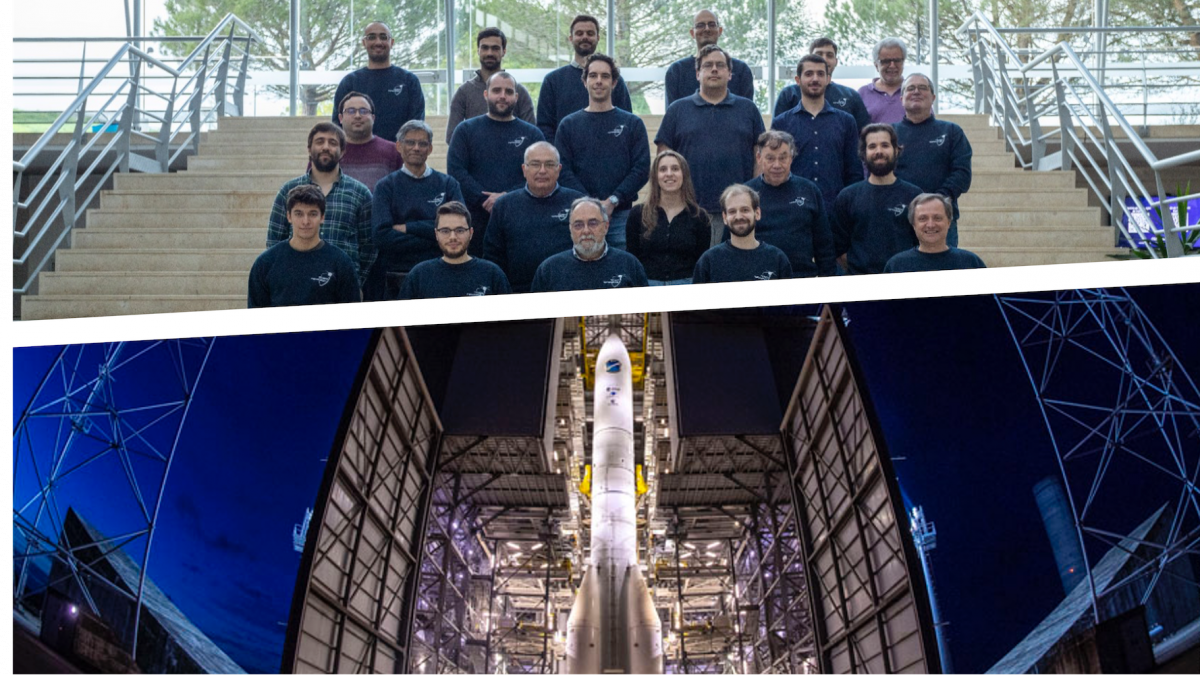
10, 9, 8…Ariane 6 is set for liftoff and we’re onboard
We are on the verge of a new dawn for European space exploration and for Portuguese academia. On its maiden flight, Ariane 6, the new European heavy lift launch vehicle, is carrying our ISTSat-1, the first university CubeSat satellite entirely conceived in Portugal. Handwritten on the coating of the rocket’s head, the so called fairing, are three names: João Paulo Monteiro, Manuel Santos and Tiago Santos – the junior researchers who travelled to the European Spaceport in French Guiana and signed the fairing before it was integrated on the rocket. “It was the most striking moment of our expedition”, confesses Manuel, part of the team of researchers and teachers at Técnico, members of the NanosatLab, a consortium led by INESC-ID.
Besides this emotional moment, the team also had some technical work to do, like checking the nanosatellite battery status (spoiler alert: it was perfect!)
The much-antecipated launch date – July 9 – was announced by ESA Director General, Josef Aschbacher, at the Berlin Air Show, one of the most prestigious events in the aerospace sector, happening this week.
There was a lot to overcome to reach this phase. The idea of building a university satellite came to light back in 2010, with technical and legislation questions to surmount and a pandemic that contributed to the delay in the construction of the Ariane 6, initially meant to be ready by 2020.
Modular and agile, as reinforced by Aschbacher, Ariane 6 has a reignitable upper stage, allowing it to launch multiple missions into different orbits on a single flight. “This inaugural flight is considered an experimental one; it is a test flight, not a commercial one”, stresses the coordinator of the ISTSat-1 project, Rui Rocha. Fingers crossed!
Text by Sara Sá, Science Writer | Communications and Outreach Office, INESC-ID
Image caption: The NanoSat Lab team and Ariane 6. Image credits: Técnico, NanoSat Lab and ArianeGroup
